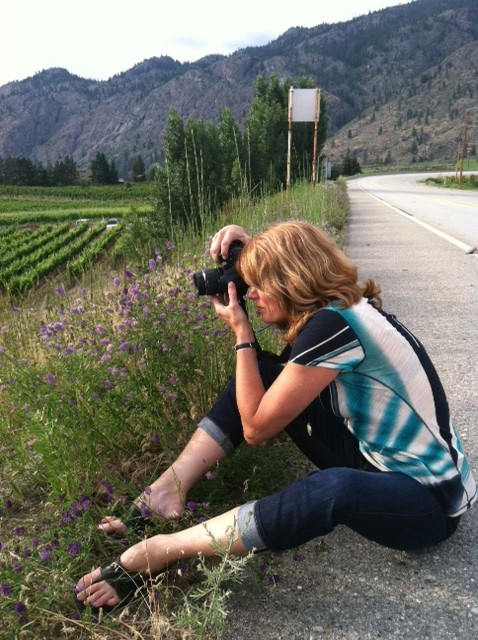Article appeared in the Winter 2018 Issue of Taste & Travel International Magazine
A Culinary and Artisanal Oasis in the Sonoran desert
Phoenix, Arizona
As twilight deepens into dusk, I follow the Phoenicians into the desert. Music in the distance beckons us and thousands of tiny, twinkling lights illuminate a ghostly panorama of saguaro and beehive cactus, silver, jumping and teddy bear cholla, the lights a welcoming guide through the desert trails. As we drift through the arid garden, taking in the fresh, cool evening air, I come upon a brass quartet behind a giant saguaro. A flamenco singer tries valiantly to keep the desert’s fading heat alive. A Mariachi band serenades the surrounding silence. I’m at Las Noches de Las Luminarias, an annual year-end festival at the 140-acre Desert Botanical Garden in Papago Park, an experience unlike any I’ve had in an urban setting.
The Valley of the Sun is a nickname created for Phoenix in the 1930’s to boost tourism. Pumpkinville was among the options considered as pumpkins have long been a cash crop here – the first challenge to my perception that nothing grows in the desert except cactus. Valley of the Sun is indeed a fitting name for a city in a valley (the Salt River Valley) surrounded by mountains that gets more than 325 days of sunshine each year, more than San Diego or Miami Beach. As far as what else grows here besides cactus and pumpkins – I was about to find out.
Mesa is the largest of the 22 communities which make up Greater Phoenix and the largest suburb in the U.S., with a greater population than Miami. Mesa is a Spanish word for table and the locals refer to it as our “table of plenty”. It is surrounded by desert which means easy access to the Sonoran wilderness.
“Would you like to try our breakfast wine?”, asks Brian Ruffentine, co-owner of Garage-East Winery, holding out a grapefruit. A blend of grapefruit juice, white wine made with grapes grown in Southern Arizona and sparkling water, it is delightfully fresh. Garage-East is one of the makers at BARNONE, a collective of skilled craftsmen which include the micro-winery, a micro-distillery, woodworkers and restauranteurs, in the town of Gilbert. BARNONE also houses a medicinal garden (think modern-day apothecary) and a culinary machinist who designs kitchen tools. The winery is in a garage, but the name is also a play on the term “garagiste”, mechanic in French, a wine term derived from a renegade group of Bordeaux winemakers in the 1990s who broke with tradition to produce what they called “garage wines” which developed a cult following. Most wineries who now refer to themselves as “garagistes” try new techniques and produce small lots of limited production wines. Wine-tasting wasn’t something I was expecting to be doing in the desert, but I found out Arizona has three wine-growing regions, one near Sedona and two near Tuscon.
Chef Anthony De Muro, of Pointe Hilton Tapatio Cliffs Resort Restaurant, tells me “Everything we use is seasonal. Right now it’s winter greens, mushrooms, apples and pears. I can always find what I need nearby.” As far as what else grows in Mesa’s back yard — oranges (blood and navel), lemons (Lisbon and Ponderosa), tangerines, peaches, plums, blackberries, apples, corn, tomatoes, lettuce, broccoli, cauliflower, beets, cabbage, green onions, carrots, spinach, snap peas, radishes, artichokes, eggplant, olives, dates, garlic, green beans, kale, Swiss chard, collard greens, black peas, turnips, pumpkins, squash, potatoes and even high quality pima cotton.
“The 6th C in the Arizona state seal is for Canadians,” they tell me at Queen Creek Olive Mill and Spa. The family-run olive mill, in Queen Creek, a town near Mesa on a fertile flood plain at the base of the San Tan Mountains, is owned by a Canadian couple. Brenda, originally from Montreal and Perry, from London, Ontario, moved to Arizona in 1997 and planted 1,000 olive trees on 100 acres on the outskirts of Queen Creek. They now have over 7,000 trees, grow 16 varieties of olive and produce Arizona’s only extra virgin olive oil. I sample several types of olive oil, including a chocolate and a bacon-flavoured oil which would be perfect with breakfast eggs (and breakfast wine).
I’m almost tricked by the mural I see on the side of a building at the Raising Arizona Market, an open-air market in Mesa. The mural is a “trompe l’oeil” masterpiece, a French term for a trick of the eye, an art technique where realistic imagery is used to create an optical illusion, often three-dimensional. Mesa’s main street has many foodie delights such as Worth Takeaway, a sandwich shop which focuses on local ingredients. Arizona standouts on the menu include Provision Coffee, Mesa’s Proof Bread, produce sourced from Crooked Sky Farms and buttery goat’s milk caramels from The Simple Farm.
Agritopia, a master-planned community in Gilbert voted by the New York Times as the leading “agri-hood” in the U.S., just celebrated its ten-year anniversary. A reaction to urban sprawl, it offers citizens village life, with the modern amenities of a suburb, surrounded by the agricultural abundance of eleven acres of farmland. What this means for locals and visitors alike are foodie trails through olive groves, orchards, gardens, cattle and dairy farms as well as hiking in the mountains and cycling. Tourists can visit the walkable urban farm and try food from the same-day harvest at The Farm Stand or at Joe’s Farm Grill.
“Common food done uncommonly well” is the motto at Joe’s Farm Grill. Lunch may be simple but it’s anything but ordinary – fast food direct from the farm. My delicious Fontina Burger, which I eat sitting under a 100-year-old tamarisk tree, is fresh-ground chuck smothered in fontina cheese and layered with roasted red peppers, grilled mushrooms, field greens and pecan pesto, all sourced from the farm. My salad is intoxicatingly fresh – the greens, vegetables and herbs were picked that day. The restaurant, in a ranch-style home, which looks like a retro diner right down to the picnic tables, is the original 1960’s family home of Joe Johnston, the developer of Agritopia.
The agricultural influences from the surrounding desert farms are very much a part of the culinary experience in downtown Phoenix. A great place to start a foodie walking tour is the DeSoto Central Market, a huge, airy food hall and gathering place in what was once a car dealership. High ceilings and exposed brick & ductwork lend atmosphere. The restaurants source local and sustainable ingredients. Try the steamed buns at Adobo Dragon, a Latin American and Asian fusion restaurant, gourmet toast at Tea & Toast, oysters at the Walrus & the Pearl oyster bar or cocktails and wine at DCM Bar.
Just down the street is another market, the lively Phoenix Public Market. A casual hang-out, the cafe features hearty sandwiches on house-baked bread, robust salads, wood-roasted rotisserie meats and dishes made from the adjacent farmer’s market, pastries (seven pastry chefs are on site) as well as local wines and craft beer. The day I visited, local couples were expertly ballroom dancing on the side-street, the historic Westward Ho building a backdrop.
The Westward Ho is just one of many downtown historic buildings with colourful histories. Built as a hotel in 1928, it was named the Westward Ho after an English town of the same name. Before the hotel fell on hard times, it was one of the most modern hotels around, with “refrigeration”, (or air conditioning) and it attracted the likes of John F. Kennedy and Ronald Reagan. It was rumoured for years that the Westward Ho appeared in the opening sequence of the Alfred Hitchcock movie “Psycho” but in fact it was the Hotel San Carlos nearby. The Spanish Colonial-style Hotel San Carlos is a rare example of a historic inn still in use. In the 30’s and 40’s it was a retreat for celebrities from Hollywood who wanted to escape the paparazzi. Bronze stars on the sidewalk showcase the signatures of many Hollywood celebrities, including Marilyn Monroe and Clark Gable. It has not undergone a renovation, so it’s still possible to see many original Art-Deco details.
Phoenix’ artist community perhaps best expresses itself through its many murals, a form of street art which adds to the city’s gritty charm. In downtown Phoenix’ Roosevelt Row, the flourishing arts district, murals adorn the walls of almost every building, from funky restaurants and coffee shops to the sides of bare apartment buildings. Neglected warehouses have been transformed into galleries and modest bungalows have been turned into cycle shops and book stores.
Not surprising that one of the most famous architects of the 20th century, Frank Lloyd Wright, chose to make Phoenix his winter home. Taliesin West, established in 1937, is nestled in the desert foothills of the Phoenix mountains. Visiting Taliesin, it’s easy to sense how deeply connected to the desert he was.
From agricultural to architectural gems, it’s all here in the Arizona desert.
Click It
Desert Botanical Garden
DeSoto Central Market
AZing Tours
Phoenix Public Market
Le Foundre Hotel (Downtown Phoenix)/Match Restaurant
Pointe Hilton Tapatio Cliffs Resort/Different Pointe of View Restaurant
Taliesen West
Mesa’s Fresh Foodie Trail
Worth Takeaway
Agritopia
Queen Creek Olive Mill
To read in PDF format:



